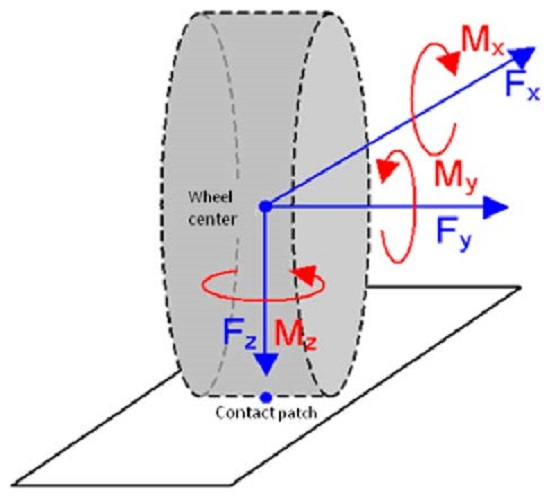Experimental and Numerical Simulation of the Dynamic Frictional Contact between an Aircraft Tire Rubber and a Rough Surface
Abstract
:1. Introduction
Rubber Block Frictional Heat
2. Experimental and Numerical Studies: Materials and Methods
2.1. Experimental Study: Frictional Heating
2.2. Experimental Study: Simulated Frictional Heating of the Tire Tread by an External Heat Source
2.3. Numerical Simulation/Heating of the Tire Tread
2.4. Numerical Simulation of a Sliding Rubber Block
3. Finite Element Model of a Rolling Tire
FEM of a Rolling Tire Using a Variable Friction Coefficient
4. Conclusions
Author Contributions
Conflicts of Interest
References
- Sakai, H.; Araki, K. Thermal engineering analysis of rubber vulcanization and tread temperature during severe sliding of a tire. Tire Sci. Technol. 1999, 27, 22–47. [Google Scholar] [CrossRef]
- Moore, D.F. Friction and wear in rubbers and tyres. Wear 1980, 61, 273–282. [Google Scholar] [CrossRef]
- Tanner, J.A.; Dreher, R.C.; Strubb, S.M.; Smith, E.G. Tire Tread Temperatures during Antiskid Braking and Cornering on a Dry Runway; NASA Technical Paper 2009; National Aeronautics and Space Administration: Washington, DC, USA, 1982.
- McCarty, J.L.; Tanner, J.A. Temperature Distribution in Aircraft Tire at Low Ground Speed; NASA Technical Report 2195; NASA Lewis Research Center: Cleveland, OH, USA, 1983.
- Clark, S.K.; Dogde, R.N. Heat Generation in Aircraft Tire Under Free Rolling Conditions; NASA Technical Report 3629; Michigan University Department of Mechanical Engineering and Applied Mechanics: Ann Arbor, MI, USA, 1982. [Google Scholar]
- Eichhorn, U.; Roth, J. Prediction and monitoring of tyre/road friction. In Proceedings of the XXIV FISITA Congress, London, UK, 7–11 June 1992; Volume 2, pp. 67–74.
- Bui, Q.V.; Ponthot, J.P. Estimation of rubber sliding friction from asperity interaction modeling. Wear 2002, 252, 150–160. [Google Scholar] [CrossRef]
- Lebon, F. Contact problems with friction: Models and simulations. Simul. Model. Pract. Theory 2003, 11, 449–463. [Google Scholar] [CrossRef]
- Grosch, K.A. The relation between friction and visco-elastic properties of rubber. Proc. R. Soc. Lond. Ser. A Math. Phys. Sci. 1963, 274, 21–39. [Google Scholar] [CrossRef]
- Kongo Kondé, A. Modélisation du Roulement D’un Pneumatique D’avion. Ph.D. Thesis, Aix-Marseille University, Marseille, France, 2011. [Google Scholar]
- Kongo Kondé, A.; Rosu, I.; Lebon, F.; Brardo, O.; Devésa, B. On the modeling of aircraft tire. Aerosp. Sci. Technol. 2013, 27, 67–75. [Google Scholar] [CrossRef]
- Kongo Kondé, A.; Rosu, I.; Lebon, F.; Seguin, L.; Brardo, O.; Troude, F.; Devésa, B. Thermomechanical couplings in aircraft tire rolling/sliding modeling. Adv. Mater. Res. 2011, 274, 81–90. [Google Scholar] [CrossRef]
- McCarty, J.L.; Yager, T.J.; Riccitiello, S.R. Wear, Friction and Temperature Characteristics of an Aircraft Tire Undergoing Braking and Cornering; NASA Technical Paper 1569; NASA Langley Research Center: Hampton, VA, USA, 1979.
- McCarty, J.L. Wear and Related Characteristics of an Aircraft Tire during Braking; NASA Technical Note, D-6963; National Aeronautics and Space Administration: Washington, DC, USA, 1972.
- Henry, J.J. Evaluation of Pavement Friction Characteristics: A Synthesis of Highway Practice, NCHRP Synthesis 291; Transportation Research Board, National Research Council: Washington, DC, USA, 2000. [Google Scholar]
- Hall, J.W.; Smith, K.L.; Titus-Glover, L.; Wambold, J.C.; Yager, T.J.; Rado, Z. Guide for Pavement Friction; National Cooperative Highway Research Program, Transportation Research Board of the National Academies: Washington, DC, USA, 2009. [Google Scholar]
- Persson, B.N.J. On the theory of rubber friction. Surf. Sci. 1998, 401, 445–454. [Google Scholar] [CrossRef]
- Persson, B.N.J.; Albohar, O.; Tartaglino, U.; Volokitin, A.I.; Tosatti, E. On the nature of surface roughness with application to contact mechanics, sealing, rubber friction and adhesion. J. Phys. Condens. Matter 2005, 17, R1–R62. [Google Scholar] [CrossRef] [PubMed]
- Persson, B.N.J. Rubber friction: Role of the flash temperature. J. Phys. Condens. Matter 2006, 18, 7789–7823. [Google Scholar] [CrossRef] [PubMed]
- Elias-Birembaux, L.; Rosu, I.; Lebon, F. Thermo-mechanical modelling of the aircraft tyre cornering. Mach. Dyn. Res. 2013, 37, 29–36. [Google Scholar]
- Rosu, I.; Elias-Birembaux, L.; Lebon, F. Thermo-viscoelastic modeling of the aircraft tire cornering. Adv. Mater. Res. 2015, 1099, 80–86. [Google Scholar] [CrossRef]
- Elias-Birembaux, L.; Rosu, I.; Lebon, F. Thermo-viscoelastic modeling of aircraft tire cornering. In Proceedings of the 30th International Conference of Polymer Processing Society, Cleveland, OH, USA, 6–12 June 2014.
- Fevrier, P.; Le Maitre, O. Tire temperature modeling: Application to race tires. In Proceedings of the VDI 13th International Congress Numerical Analysis and Simulation in Vehicle Engineering, Wurzburg, Germany, 27–28 September 2006.
- Kainradl, P.; Kaufmann, G. Heat generation in pneumatic tires. Rubber Chem. Technol. 1976, 49, 823–861. [Google Scholar] [CrossRef]
- Mooney, M. A theory of large elastic deformation. J. Appl. Phys. 1940, 11, 582–592. [Google Scholar] [CrossRef]
- Rivlin, R.S. Large elastic deformations of isotropic materials. IV. Further developments of the general theory. Philos. Trans. R. Soc. Lond. 1948, 241, 379–397. [Google Scholar] [CrossRef]
- Lin, Y.J.; Hwang, S.J. Temperature prediction of rolling tires by computer simulation. Math. Comput. Simul. 2004, 67, 235–249. [Google Scholar] [CrossRef]
- Lahellec, N.; Mazerolle, F.; Michel, J.C. Second-order estimate of the macroscopic behaviour of periodic hyperelastic composites: Theory and experimental validation. J. Mech. Phys. Solids 2004, 52, 27–49. [Google Scholar] [CrossRef]
- Yanjin, G.; Guoqun, Z.; Gang, C. Influence of belt cord angle on radial tire under different rolling states. J. Reinf. Plast. Compos. 2006, 25, 1059–1077. [Google Scholar] [CrossRef]
- Dassault Systèmes. ABAQUS/Standard; Theory Manual and Example Problems Manual; Release 6.12; Dassault Systèmes: Waltham, MA, USA, 2011. [Google Scholar]

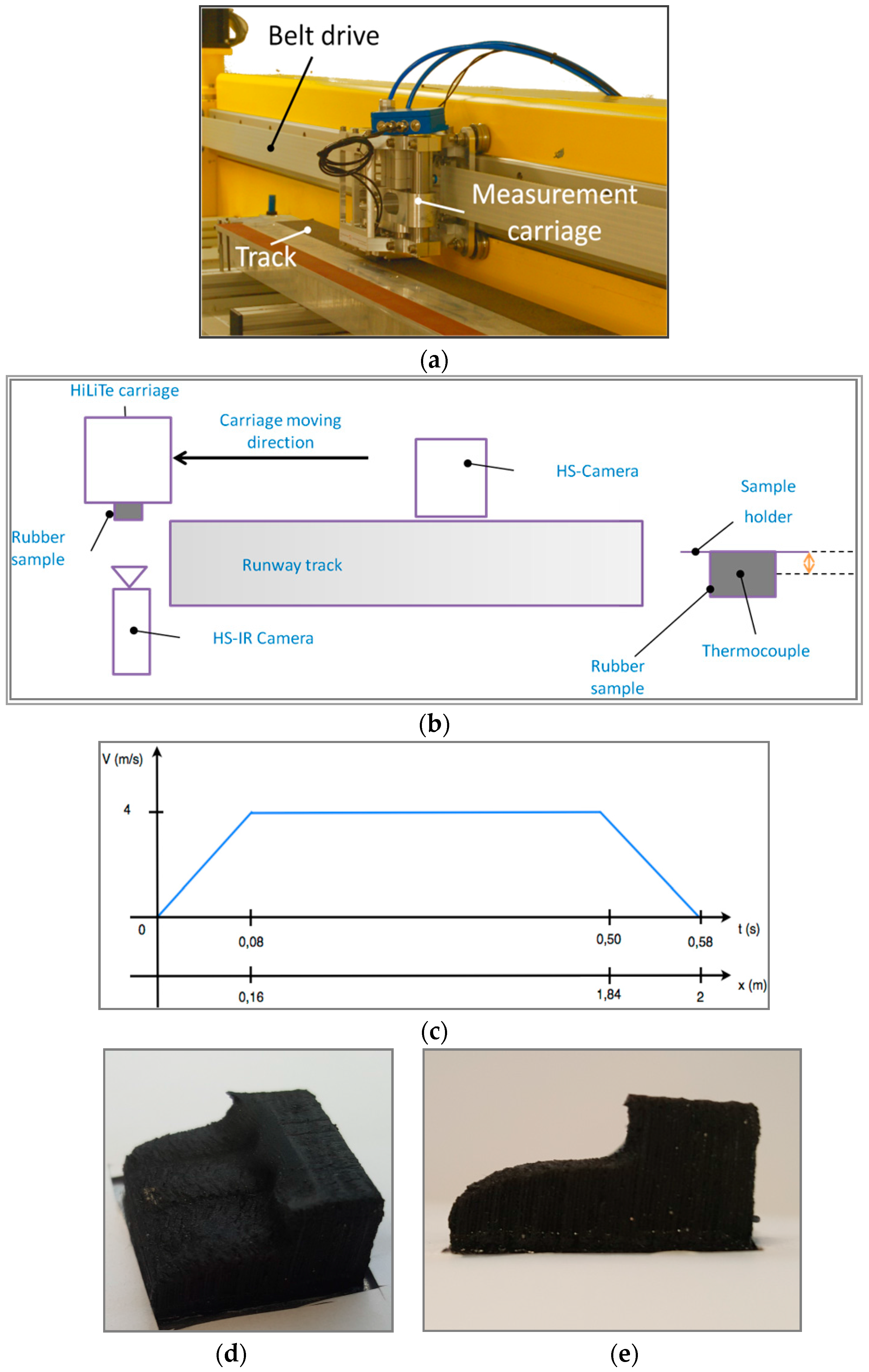
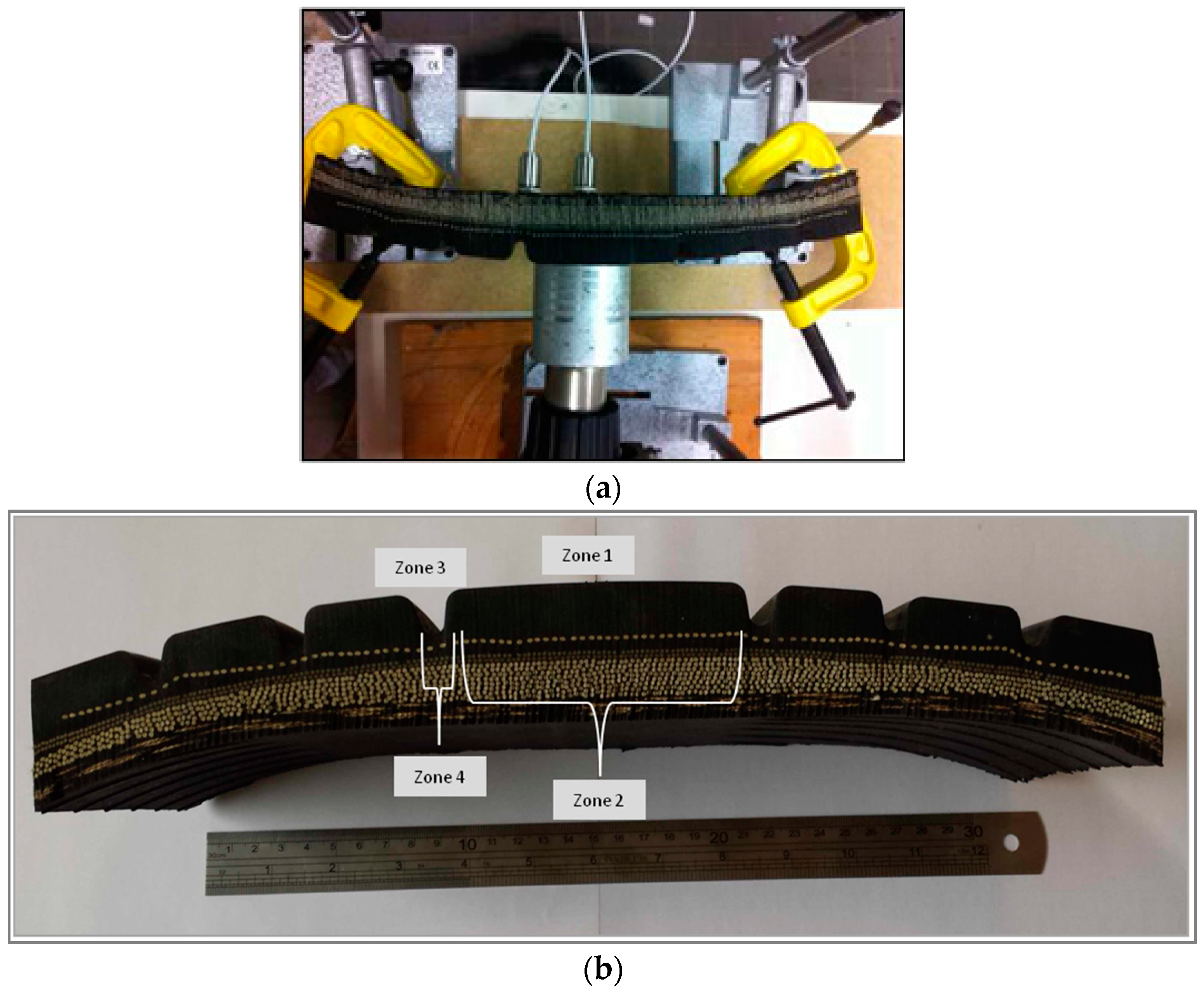
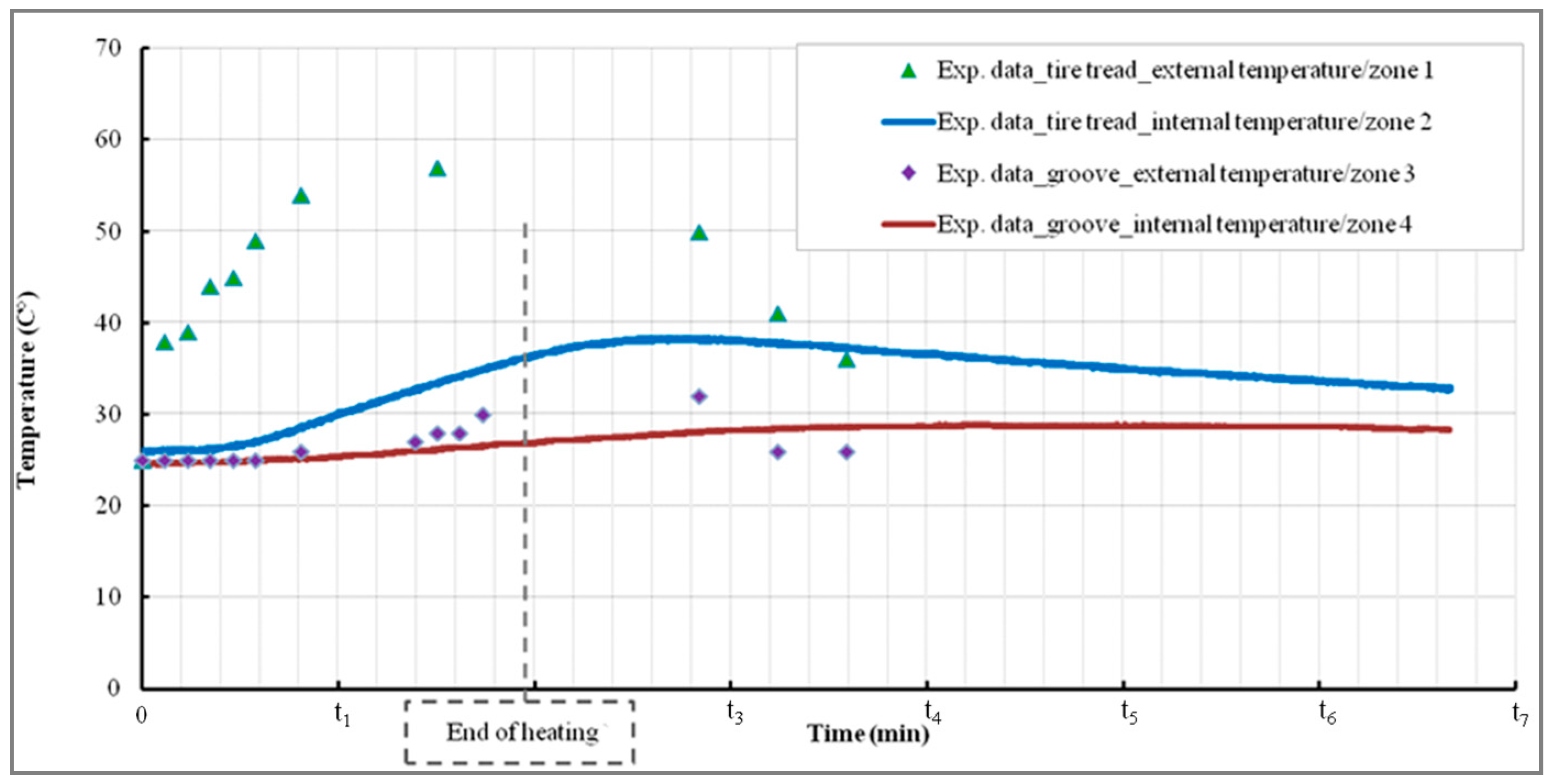
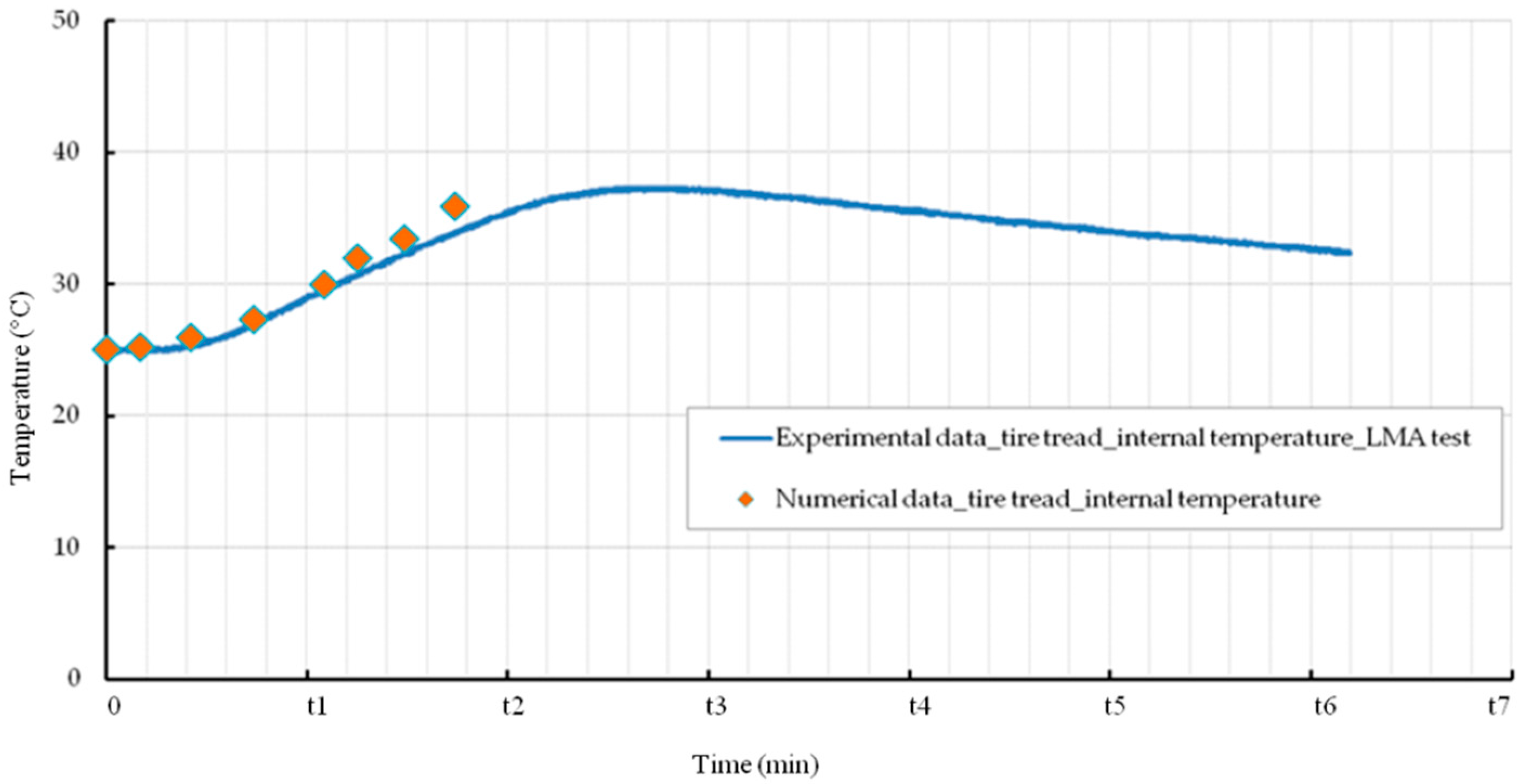
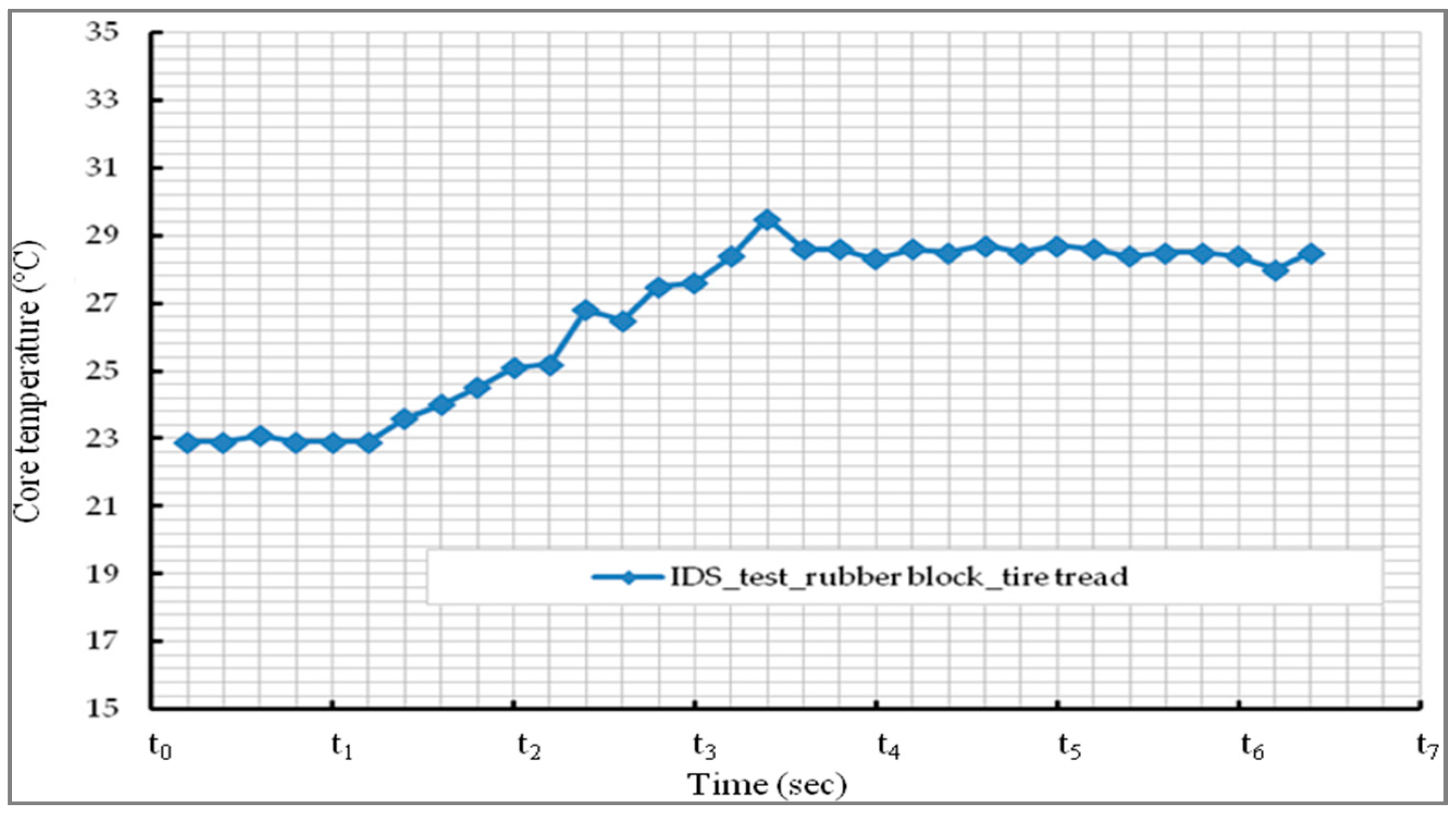
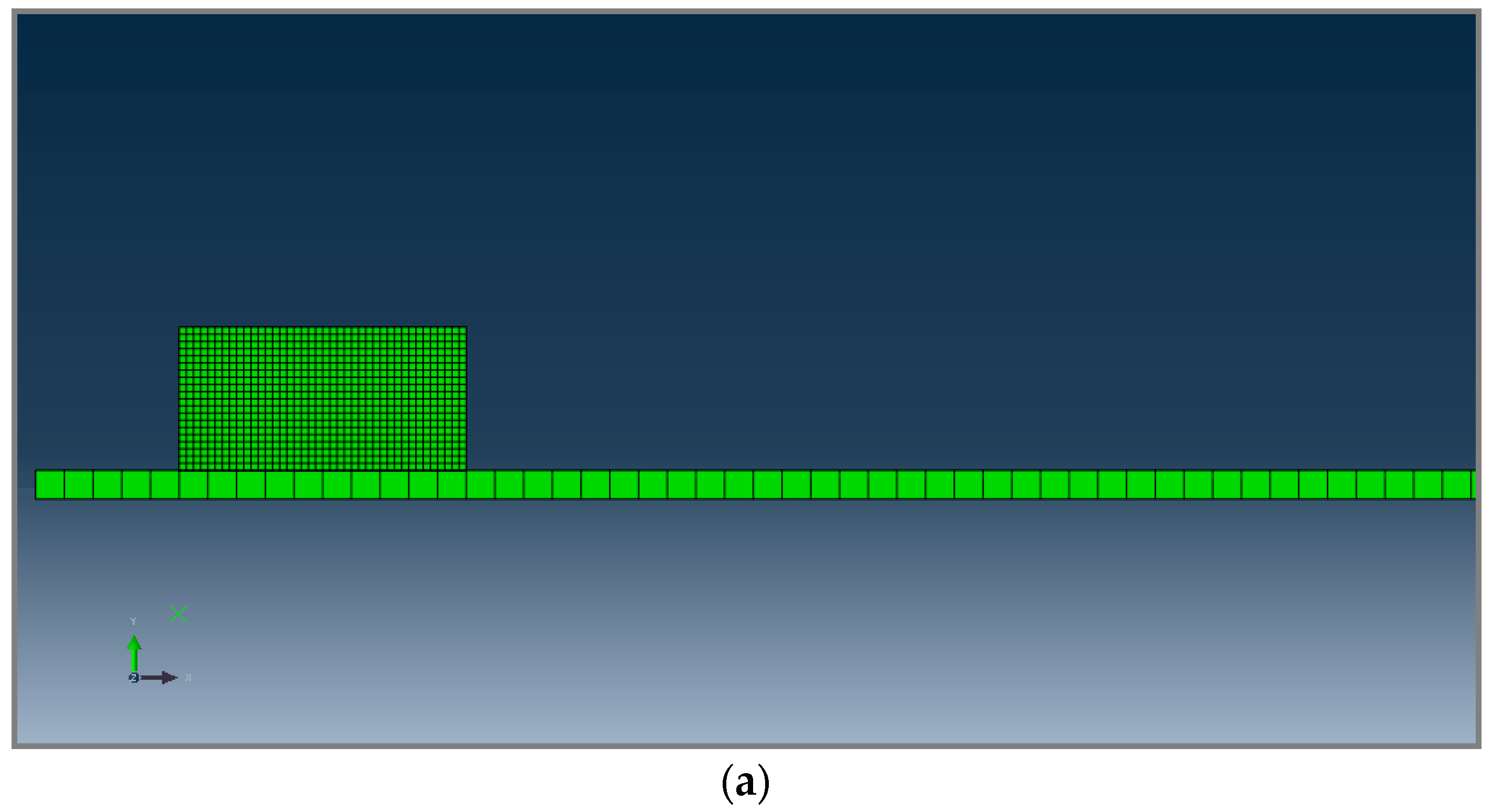
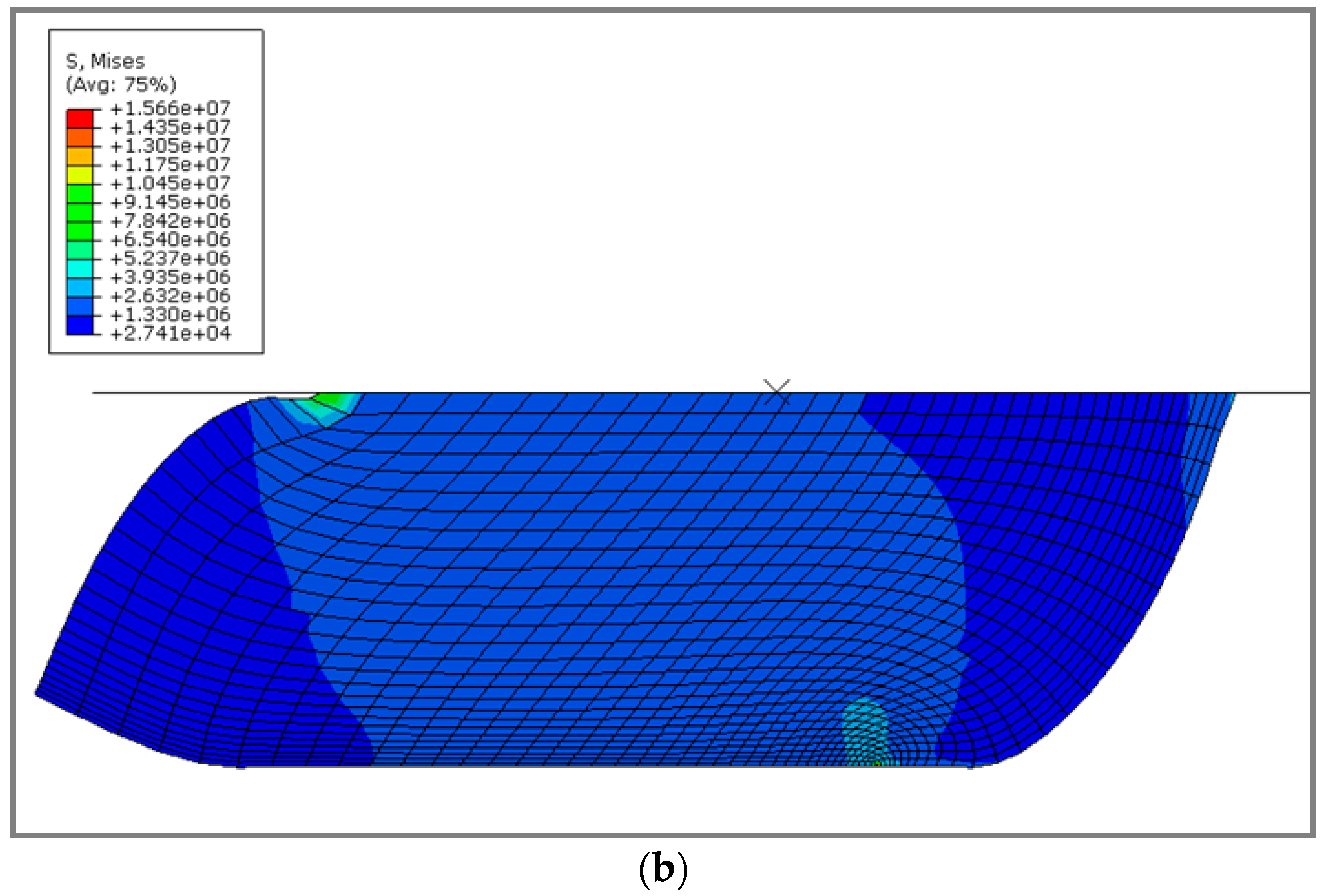
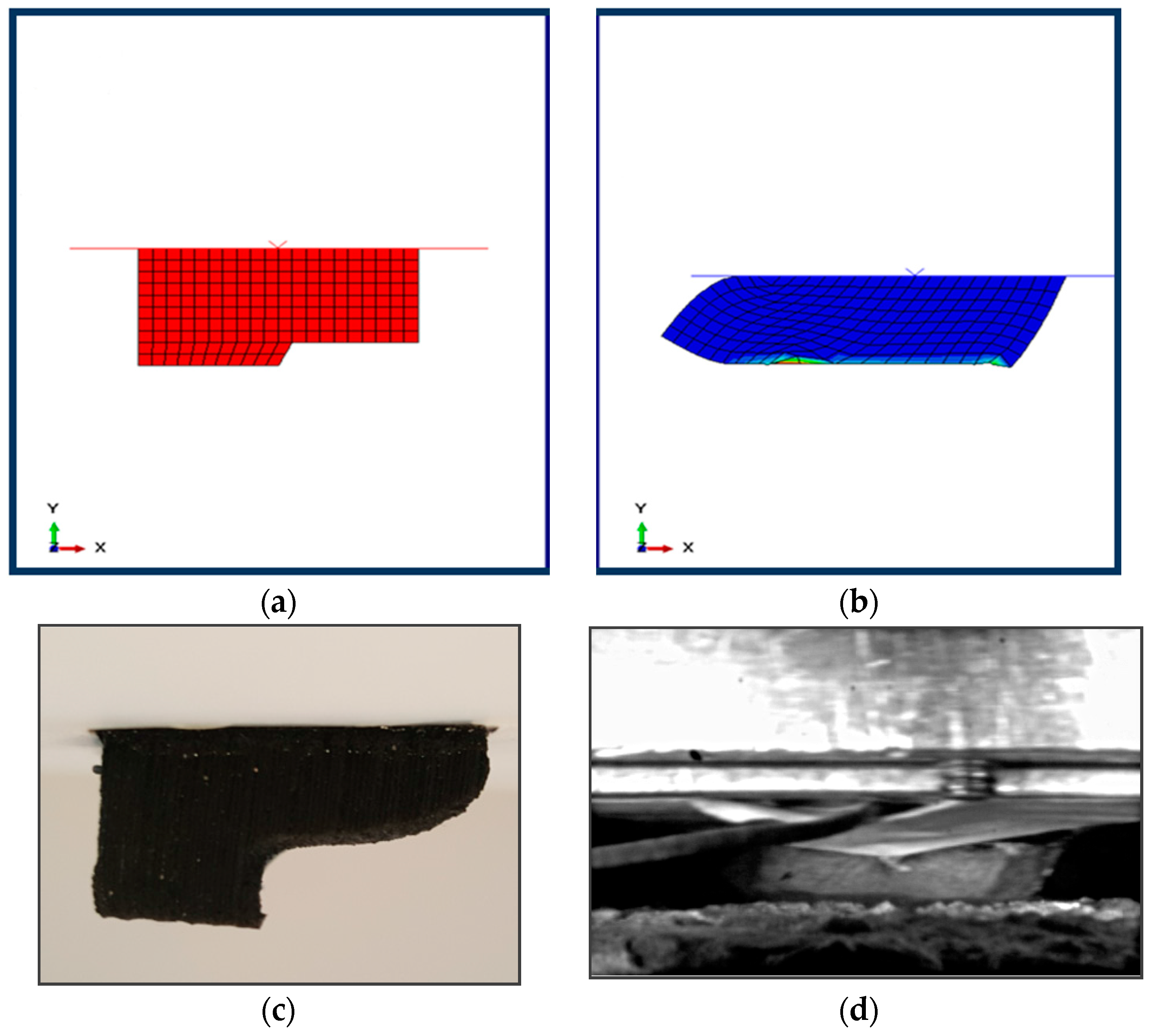
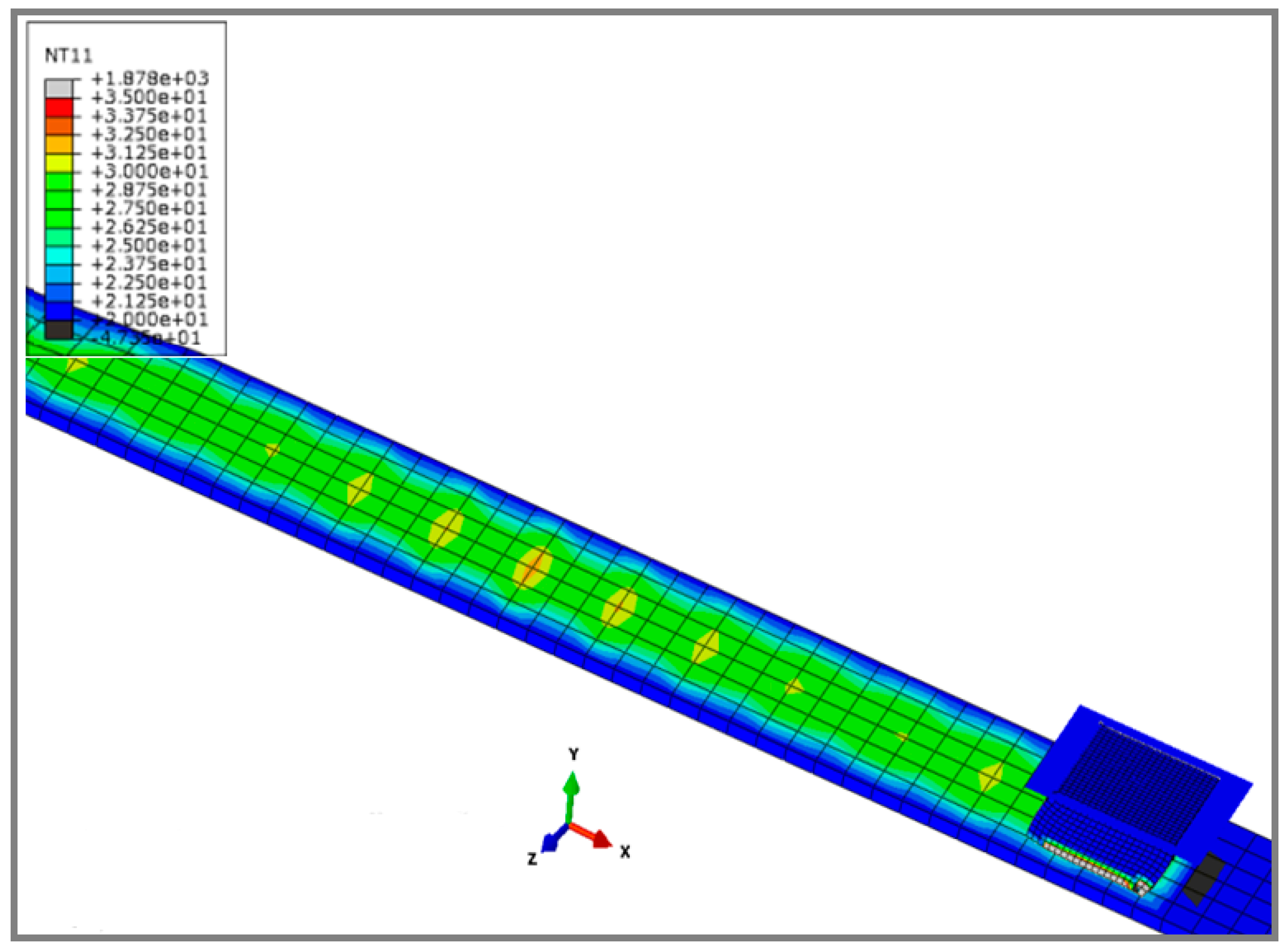
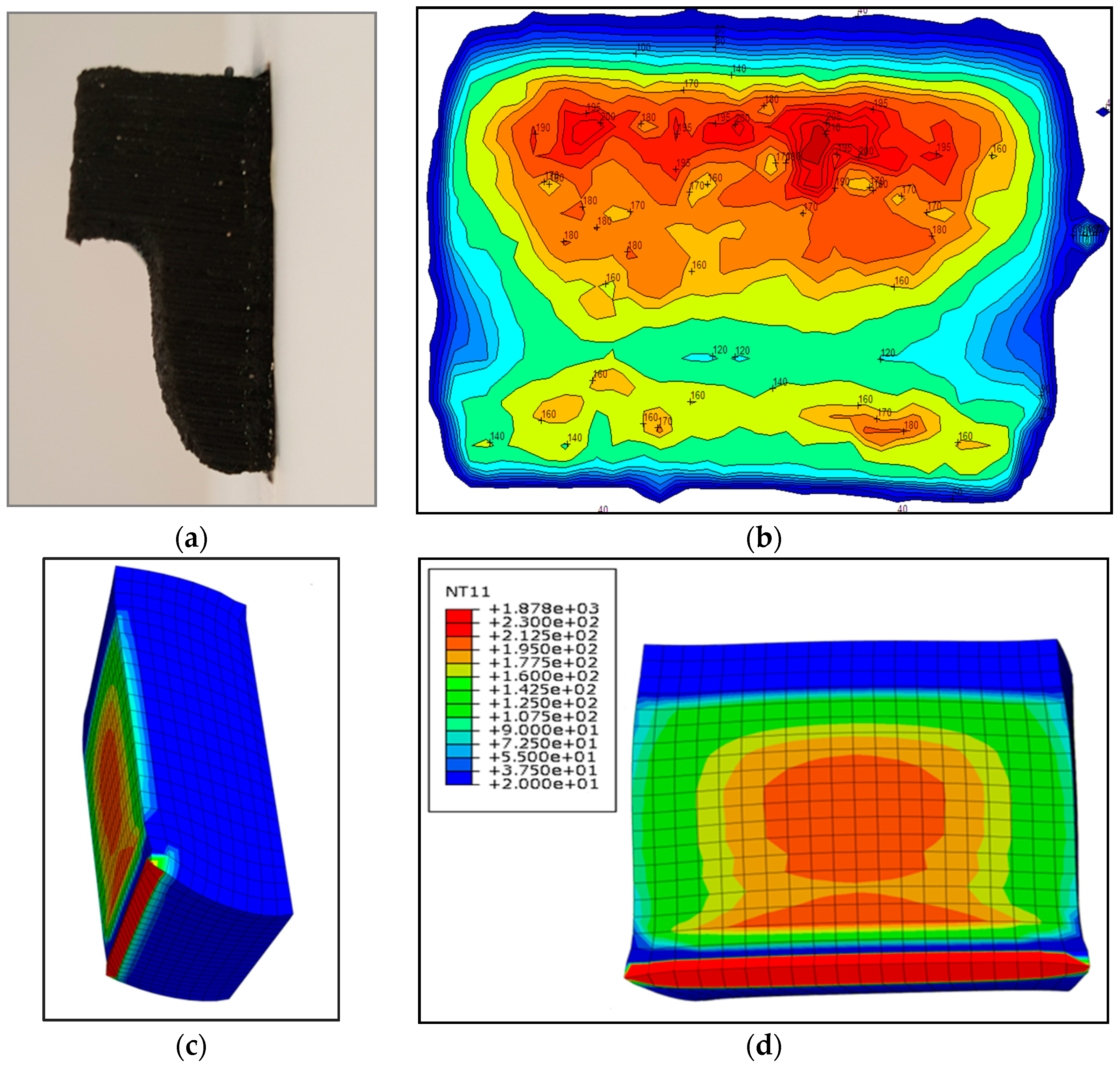
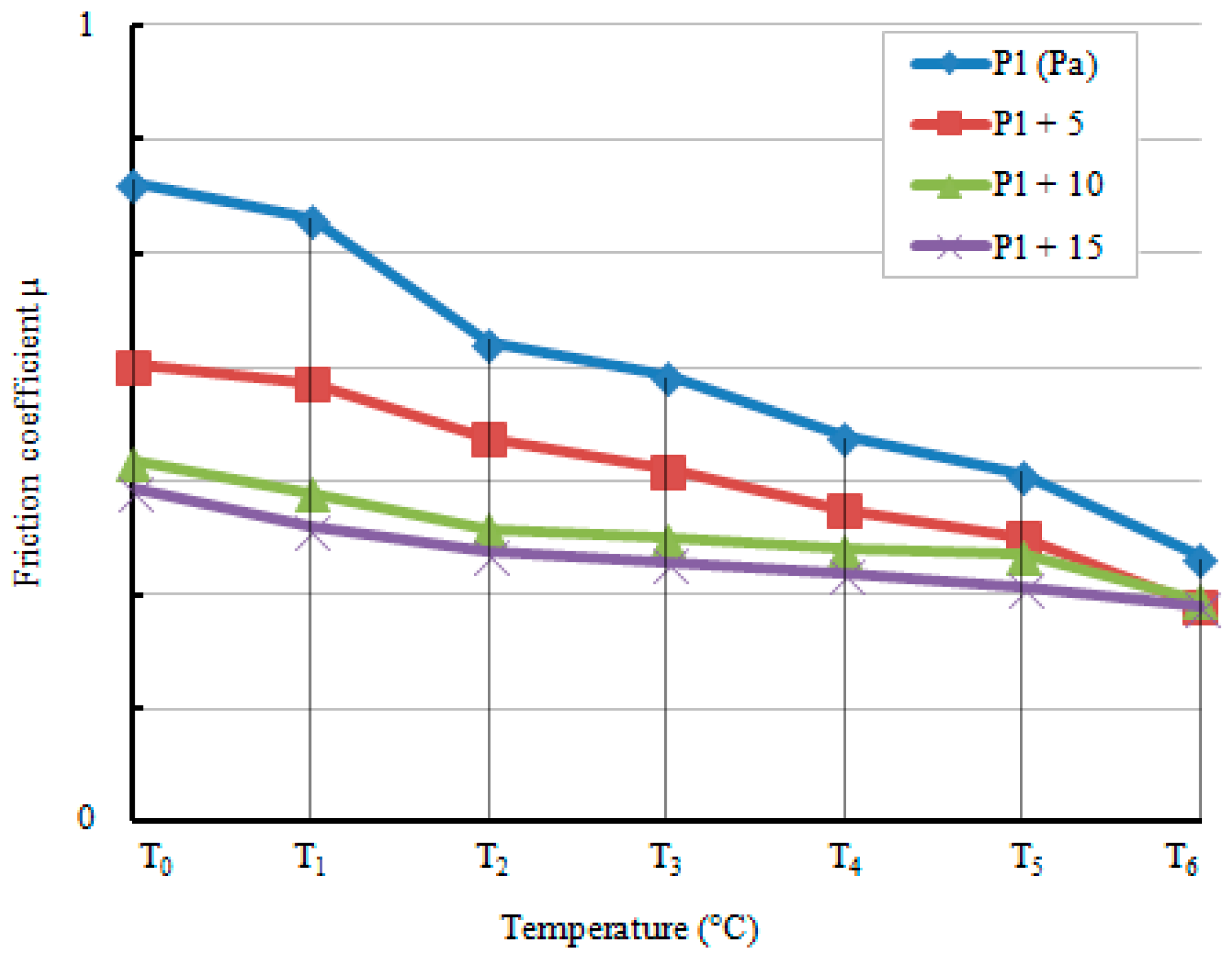
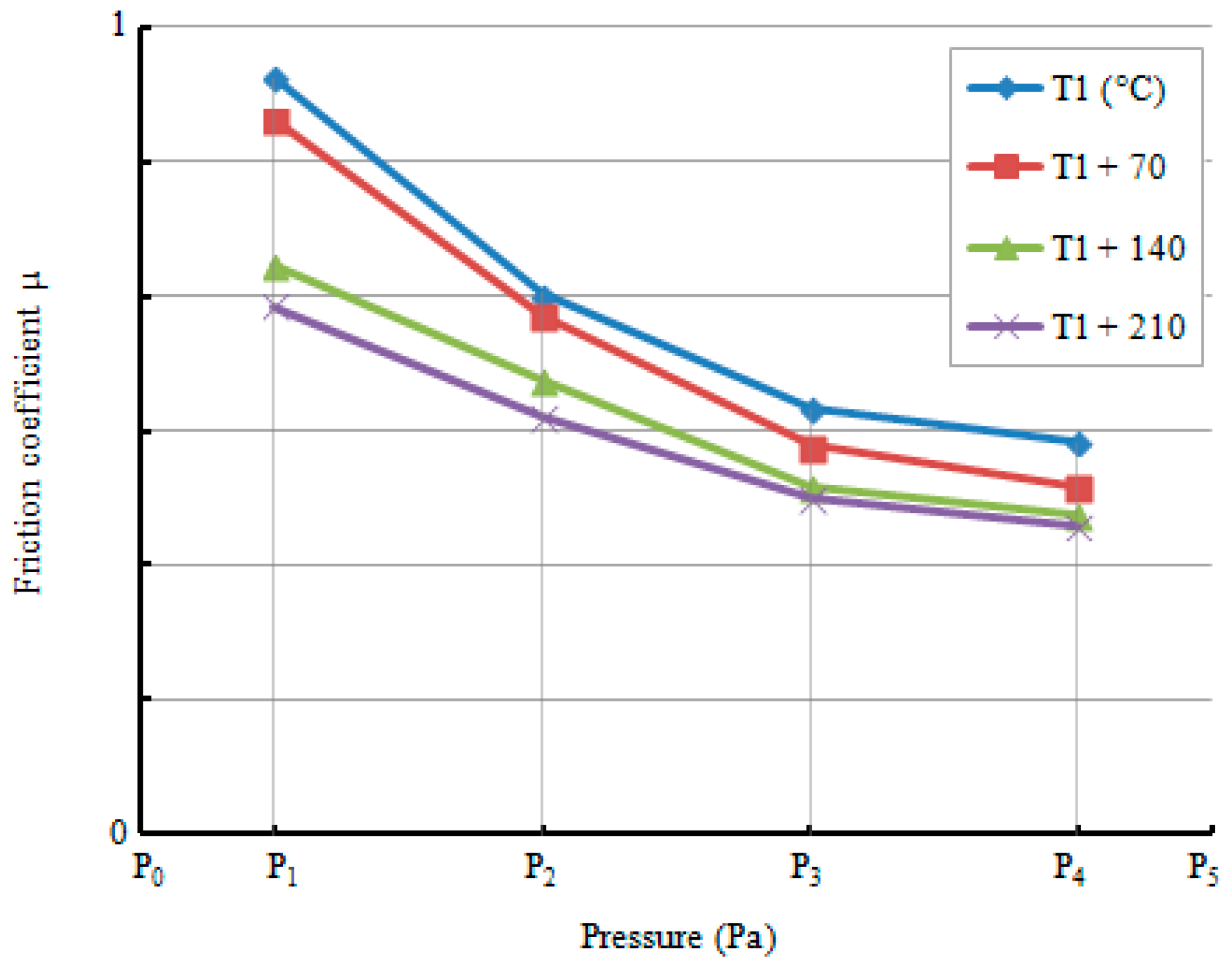
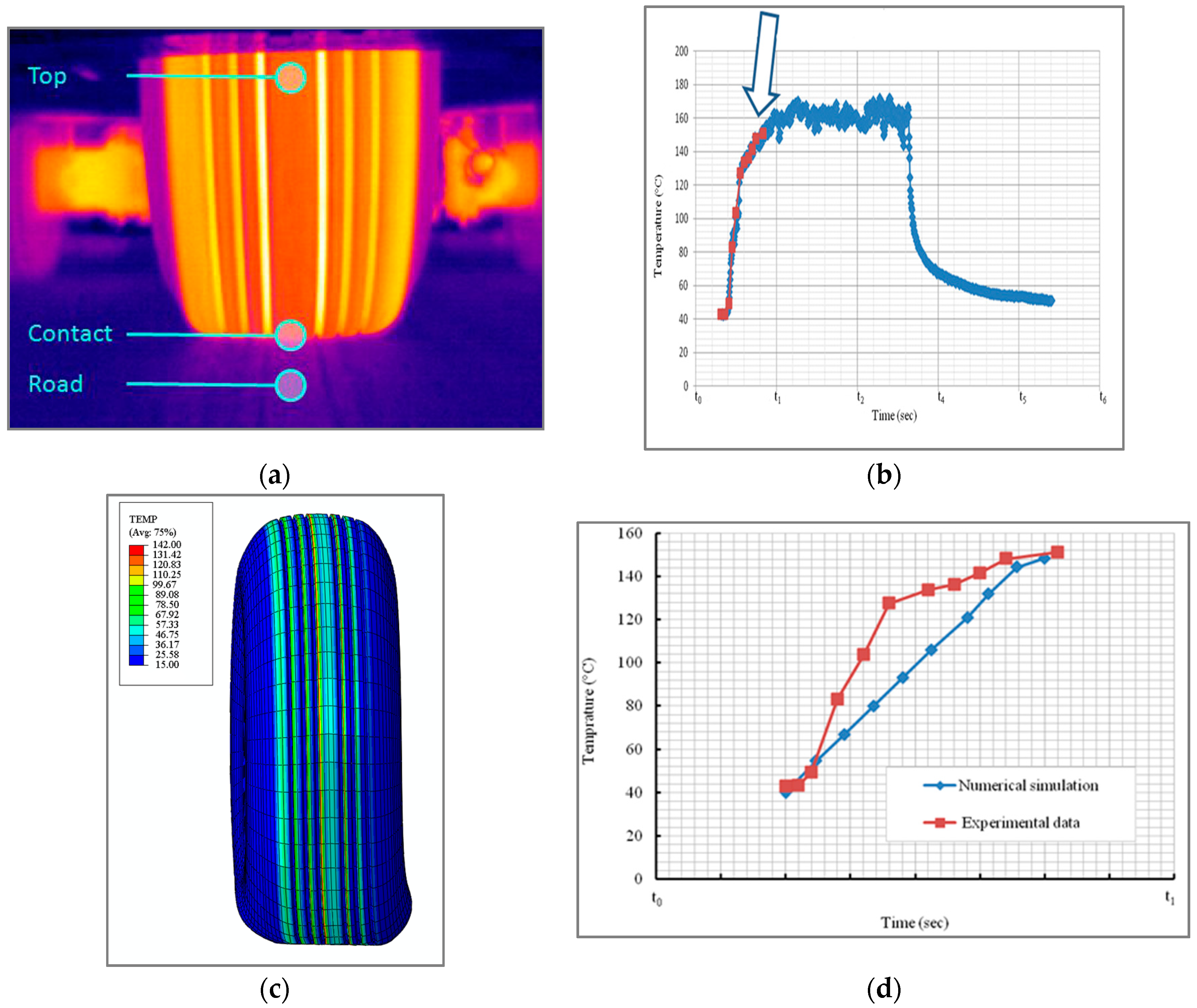
© 2016 by the authors; licensee MDPI, Basel, Switzerland. This article is an open access article distributed under the terms and conditions of the Creative Commons Attribution (CC-BY) license (http://creativecommons.org/licenses/by/4.0/).
Share and Cite
Rosu, I.; Elias-Birembaux, H.L.; Lebon, F.; Lind, H.; Wangenheim, M. Experimental and Numerical Simulation of the Dynamic Frictional Contact between an Aircraft Tire Rubber and a Rough Surface. Lubricants 2016, 4, 29. https://doi.org/10.3390/lubricants4030029
Rosu I, Elias-Birembaux HL, Lebon F, Lind H, Wangenheim M. Experimental and Numerical Simulation of the Dynamic Frictional Contact between an Aircraft Tire Rubber and a Rough Surface. Lubricants. 2016; 4(3):29. https://doi.org/10.3390/lubricants4030029
Chicago/Turabian StyleRosu, Iulian, Hélène L. Elias-Birembaux, Frédéric Lebon, Hagen Lind, and Matthias Wangenheim. 2016. "Experimental and Numerical Simulation of the Dynamic Frictional Contact between an Aircraft Tire Rubber and a Rough Surface" Lubricants 4, no. 3: 29. https://doi.org/10.3390/lubricants4030029
APA StyleRosu, I., Elias-Birembaux, H. L., Lebon, F., Lind, H., & Wangenheim, M. (2016). Experimental and Numerical Simulation of the Dynamic Frictional Contact between an Aircraft Tire Rubber and a Rough Surface. Lubricants, 4(3), 29. https://doi.org/10.3390/lubricants4030029






